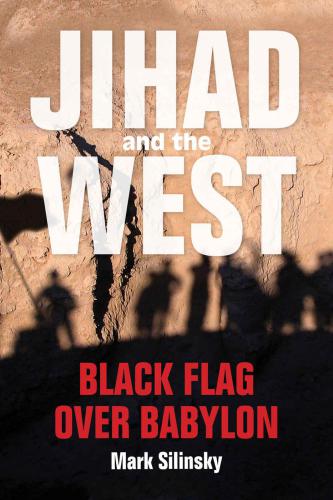
Jihad and the West
Black Flag over Babylon
کتاب های مرتبط
- اطلاعات
- نقد و بررسی
- دیدگاه کاربران
نقد و بررسی

August 29, 2016
Kennedy (The Great Arab Conquests), a medieval historian and professor of Arabic at SOAS, University of London, follows the threads of the centuries-long debate within the wider Islamic community over how to establish a secular system of governance capable of enforcing divine law. With no blueprint in the Qur’an and little thought given during the Prophet Muhammad’s life as to what would come after, early Muslims struggled to decide how rulers should be chosen, what their roles should be, and how laws should be adjudicated and applied. The various caliphates were no more nefarious or violent than any other type of government, and Kennedy’s engrossing and entertaining introduction highlights their impressive diversity. Many caliphs were great patrons of the arts and intellectual pursuits. For example, Abbasid Baghdad was “the first society in the history of the world in which a man or a woman could make a living as an author.” Fatimid caliph Haˉkim, on the other hand, “made decrees and new laws entirely on his own initiative, neither taking advice nor supporting them with traditions and precedents.” The Ottoman title of caliph “was never more than a vague honorific,” and its final abolition in 1924 changed little in the Muslim world, but Kennedy clearly shows the continuing power of this idea to incite controversy.

A mostly nonpolemical survey of the history of caliphates since the death of Muhammad in 632.British scholar Kennedy (Arabic/SOAS, Univ. of London; The Great Arab Conquests: How the Spread of Islam Changed the World We Live In, 2007, etc.) concisely defines the caliphate as it has evolved through the ages from one Islamic court to the next, including the Ottoman ascendancy as protector of the Muslim people and today's Islamic State group, which "looks back to caliphal examples and a romantic view of early Islamic warfare." The title of "caliph" was essentially a spiritual designation, either as a "deputy" for Muhammad or for Allah himself; over the centuries, there has been considerable tension regarding the role. The first four caliphs after Muhammad's death were considered Orthodox: the leader (always a man) should come from the powerful merchant tribe the Quraysh, the prophet's own extended clan. However, should the successor be Muhammad's close associate Abu Bakr or a hereditary successor, his cousin and son-in-law, Ali? The reign of Ali (Shiite), especially, would be identified with "the interests of the deprived and excluded in Muslim society, those who felt that their rights had been ignored or trampled on by dominant elites" (Sunnis). From the founding four, Kennedy delves chapter by chapter into the successful rule of, among others, the Umayyads, who helped to spread the Arabic language and wondrous architecture; the cultured Abbasids, who held together a multicultural Muslim world that lasted until the defeat by the Mongols in 1258; and the splinter Shiite caliphs--e.g., the Fatimids in Tunisia and Egypt. In the last chapter, the author touches on the misappropriations of the current caliphate established by the Islamic State group in 2014. Enlisting significant Arab-language scholarship, Kennedy provides a carefully calibrated, timely chronicle for nonacademic readers. COPYRIGHT(1) Kirkus Reviews, ALL RIGHTS RESERVED.

September 1, 2016
Kennedy (Arabic, Univ. of London; The Great Arab Conquests) presents an overview of Islamic history through an analysis of the idea of the caliphate and its manifestation as a ruling structure within Islamic society following the death of the prophet Muhammad in 632 CE. The caliphate was essentially a religious model for how the community of believers should be ruled. As the Muslim community expanded within Asia and Southeastern Europe, the caliphate combined an aspiration toward spiritual guidance with shifting versions of political and military leadership. The author integrates religious theories reflecting the Islamic character of this vast empire with social, economic, and cultural achievements, particularly in the Abbasid Empire centered in Baghdad, but equally rich in numerous smaller dynastic states where trade and intellectual life flourished. This clearly written summary of a vast and complex past emphasizes the range of Islamic experience and concludes that the brutal and intolerant expression of the caliphate by the Islamic State (IS) in Iraq and Syria reflects the power of the idea of the caliphate but little of its variety, creativity, or openness. VERDICT A useful and readable summary for casual readers that interweaves religious and secular developments in Islamic history inherent in the concept of the caliphate.--Elizabeth Hayford, formerly with Associated Coll. of the Midwest, Evanston, IL
Copyright 2016 Library Journal, LLC Used with permission.

























دیدگاه کاربران